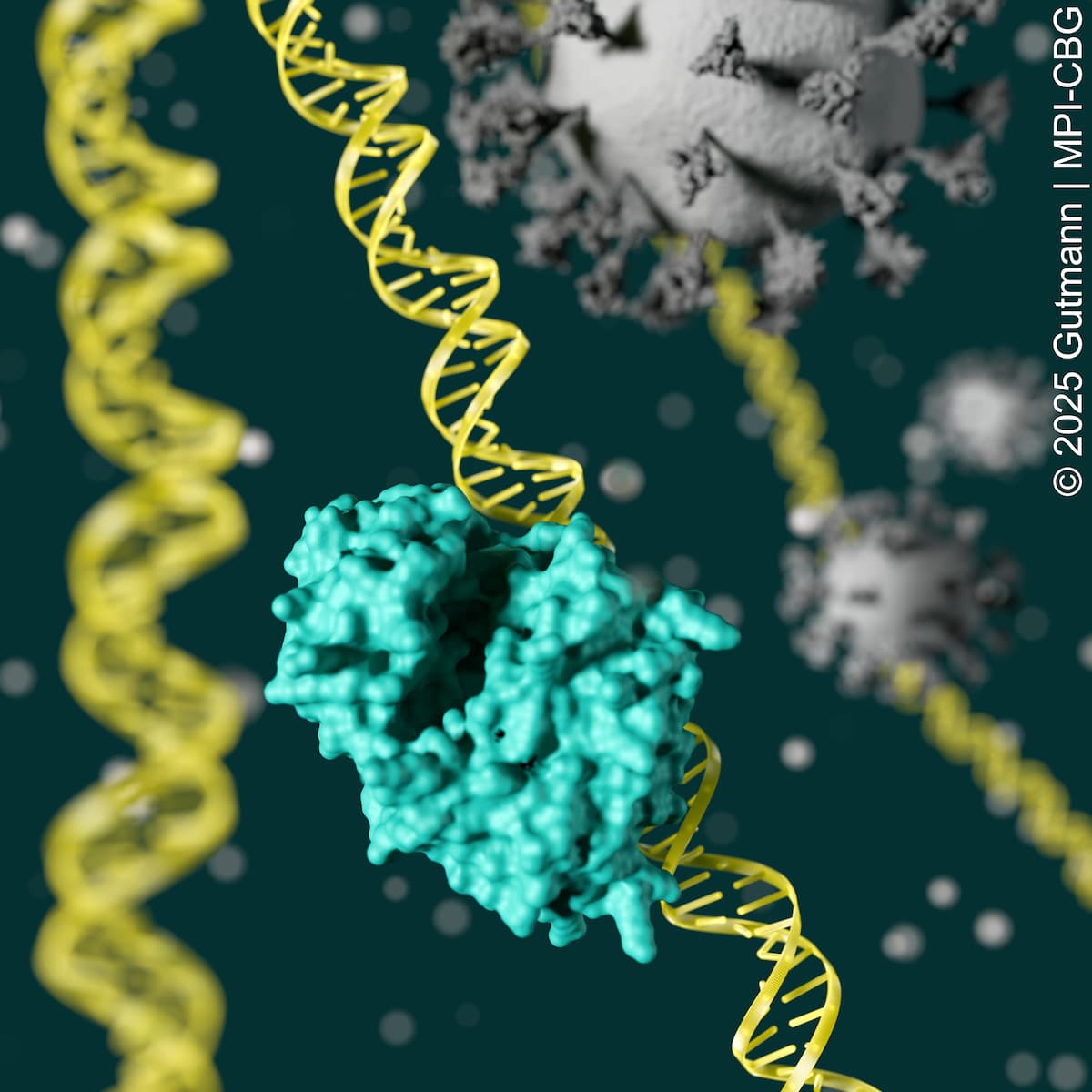When the SARS-CoV-2 virus invades a cell, it causes collateral damage. As a result, snippets of the cell’s own DNA can spill from the nucleus and mitochondria into the cytoplasm, where DNA does not belong. Such mislocalized DNA would activate the immune sensor protein cGAS, which alerts the cell to produce antiviral molecules. In patients with COVID-19, however, this immediate immune response is typically delayed. This delay gives the virus time to multiply before other human immune defense systems kick in.
A recent study, led by Theresia Gutmann in the research lab of Anthony Hyman at the Max Planck Institute of Molecular Cell Biology and Genetics (MPI-CBG) in Dresden, Germany, published in PNAS, uncovers a novel mechanism that may explain why cGAS stays inactive at the onset of the disease.
To understand how SARS-CoV-2 might interfere with the immune system, the researchers focused on one of the virus’s key structural components: the nucleocapsid protein, which is produced in large quantities in the infected cell. Its primary function is to package the viral RNA genome (a molecule that carries the virus’s genetic code, similar to DNA) so that it can fit into the tiny virus particles. The team investigated the interplay between the SARS-CoV-2 nucleocapsid protein and the DNA immune sensor cGAS. Biochemical and biophysical experiments revealed that the nucleocapsid protein binds not only to RNA but also to DNA. “This strong binding to DNA was unexpected, as the nucleocapsid protein is a specialized RNA-binding protein that evolved to bind the viral RNA genome. Viral RNA is structurally very different from our DNA,” says David Kuster, joint first author of the study. The viral nucleocapsid protein masks the DNA from cGAS detection, preventing an immune response.
This discovery adds a fresh twist to the repertoire of coronaviral immune evasion tricks. Future research will show whether this trick may be a common tactic used by other viruses to evade the immune system.
Original Publication
Gutmann, Theresia, David Kuster, and Anthony A. Hyman. SARS-CoV-2 Nucleocapsid Protein Directly Prevents cGAS–DNA Recognition through Competitive Binding. Proceedings of the National Academy of Sciences 122 (2025). June 23, 2025. doi:10.1073/pnas.2426204122.
